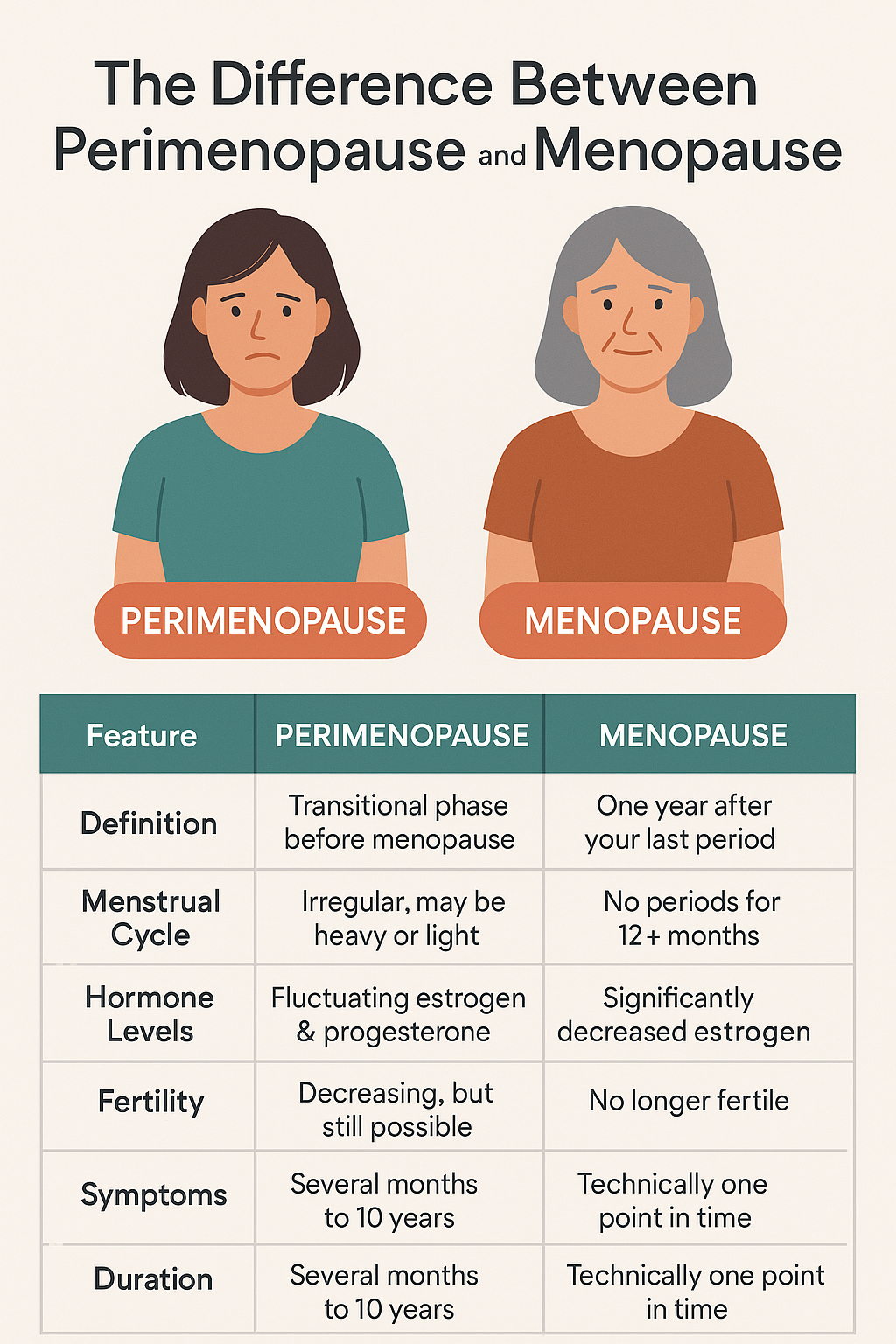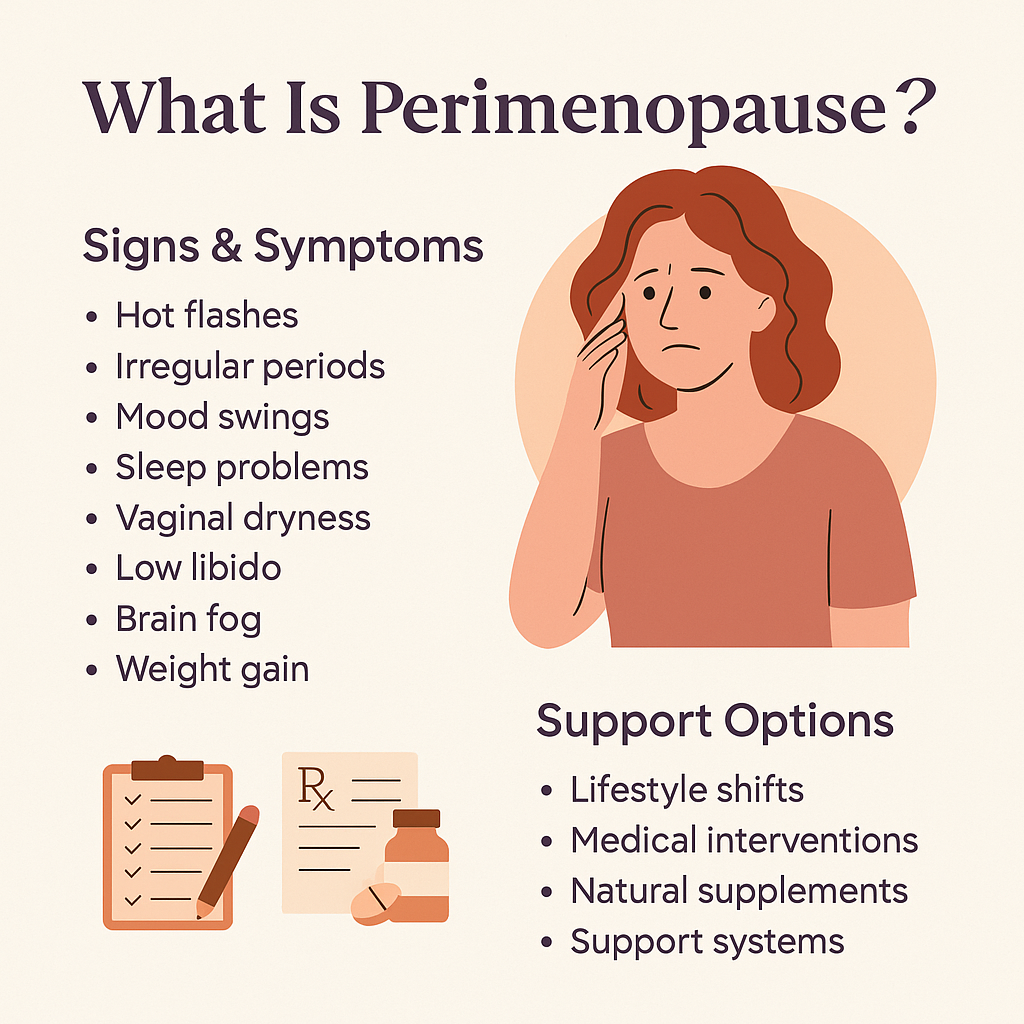Article: The Difference Between Perimenopause and Menopause: What Every Woman Should Know

The Difference Between Perimenopause and Menopause: What Every Woman Should Know
What Is Perimenopause?
Perimenopause — meaning “around menopause” — is the transition period leading up to menopause, where your hormone levels — especially estrogen — begin to fluctuate.
Key Facts About Perimenopause:
-
Begins typically in your late 30s to early 40s
-
Can last several months to 10 years
-
Symptoms are caused by hormonal fluctuations
-
Periods become irregular but have not stopped completely
You are still technically fertile during perimenopause, though fertility declines.
What Is Menopause?
Menopause is the point in time when a woman has not had a period for 12 consecutive months — with no other underlying causes (like illness or pregnancy).
Key Facts About Menopause:
-
The average age in most women is 51
-
It marks the end of reproductive years
-
Your ovaries stop releasing eggs and producing most estrogen
-
Post-menopause is the stage that follows
Side-by-Side Comparison Table
| Feature | Perimenopause | Menopause |
|---|---|---|
| Definition | Transitional phase before menopause | One year after your last period |
| Menstrual Cycle | Irregular, may be heavy or light | No periods for 12+ months |
| Hormone Levels | Fluctuating estrogen & progesterone | Significantly decreased estrogen |
| Fertility | Decreasing, but still possible | No longer fertile |
| Symptoms | Begin to appear | Some continue, others stabilize |
| Duration | Several months to 10 years | Technically one point in time |
| Treatment Needs | Symptom management | Hormonal or non-hormonal therapies |
Common Symptoms of Both Stages
While both stages can bring similar symptoms, their intensity and frequency may differ. See our full guide on perimenopause symptoms for more detail.
-
Hot flashes
-
Night sweats
-
Vaginal dryness
-
Mood swings
-
Sleep disturbances
-
Low libido
-
Brain fog
-
Joint pain
In perimenopause, symptoms may come and go. In menopause, they may stabilize or evolve.
How to Know Where You Are
Your doctor may use:
-
Blood tests (to check FSH, estrogen, and other hormone levels)
-
Symptom tracking via apps like Flo
-
Menstrual history
If you're under 45 and missing periods, it’s important to rule out other causes besides menopause.
Support Options
Explore our full article on support options for hormone health or consult with a menopause specialist.
Lifestyle
-
Anti-inflammatory diet (see Harvard’s guide)
-
Regular movement (especially strength training)
-
Stress-reducing practices like yoga or journaling
Medical
-
Low-dose birth control pills during perimenopause
-
Non-hormonal medications for mood or hot flashes
Natural Remedies
-
Herbal support (black cohosh, maca, red clover)
-
Acupuncture, mindfulness, CBT
Final Thoughts
Understanding the difference between perimenopause and menopause is key to taking control of your health journey. While one marks a transition and the other a milestone, both are natural and manageable stages of life.
With the right resources and support, you can move through these changes with clarity and confidence.

